INTERNACIONAL
Philippine lawmaker criticizes US for new travel warning: ‘Unfair treatment from our number 1 ally’

A Philippine lawmaker on Sunday railed against the U.S. government for its updated travel advisory for the Asian country, with the politician arguing that the warning to American travelers is «unfair» coming from «our number one ally.»
«This is an unfair shotgun warning,» Philippines House of Representatives member Rufus Rodriguez said. «There are certainly many places in our country that are safe to tourists such as Cagayan de Oro City.»
«The United States should review this advisory. We do not deserve this unfair treatment from our number one ally,» he continued.
On May 8, the U.S. State Department issued a «Level 2: Exercise Increased Caution» travel advisory for the Philippines.
CAR CRASH AT AIRPORT IN THE PHILIPPINES KILLS AT LEAST 2, INCLUDING YOUNG GIRL
Philippine Rep. Rufus B. Rodriguez said the country does not «deserve this unfair treatment from our number one ally.» (Rufus B. Rodriguez/ Facebook)
«Terrorists and armed groups have carried out kidnappings, bombings, and other attacks targeting public areas like tourist sites, markets, and local government facilities in the Philippines,» the advisory reads. «Violent crimes are also common in the Philippines such as robbery, kidnappings, and physical assaults. Protests happen in the Philippines and could turn violent and/or result in traffic jams and road closures with limited capacity of the local government to respond.»
«Due to the risks, U.S. government employees working in the Philippines must obtain special authorization to travel to certain areas of the country,» it added.
The advisory cautioned against all travel to the Sulu Archipelago and Marawi City, issuing a «Level 4: Do Not Travel» warning over kidnappings and other attacks targeting foreign nationals, including Americans, in the Sulu Archipelago and the Sulu Sea and the risk of death or injury due to «ongoing clashes between terrorist group remnants and Philippine security forces in Marawi.»
VANCOUVER DRIVER PLOWS INTO CROWD OF PEOPLE ATTENDING FILIPINO FESTIVAL, KILLING MULTIPLE VICTIMS
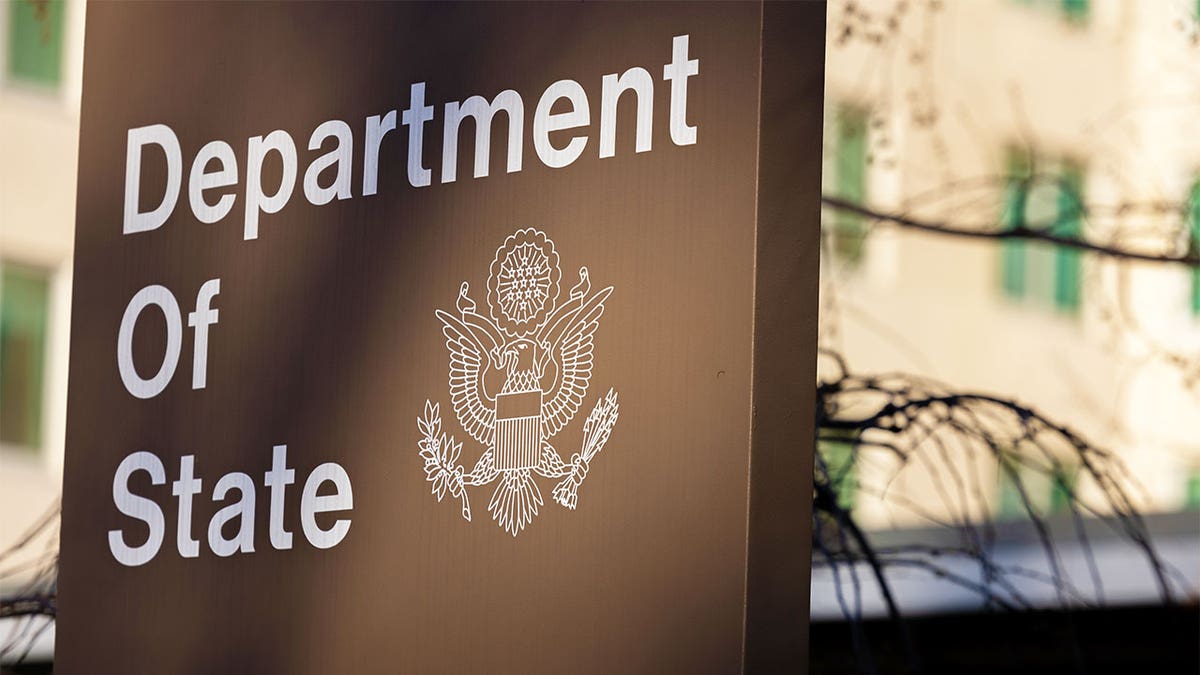
The U.S. State Department issued a «Level 2: Exercise Increased Caution» travel advisory for the Philippines. (Nathan Posner/Anadolu Agency via Getty Images)
It said the U.S. government had limited resources to provide emergency services to its citizens in these areas.
A «Level 3: Reconsider Travel» advisory was issued for Mindanao island — with exceptions for Davao City, Davao del Norte Province, Siargao Island and the Dinagat Islands — due to terrorist and armed groups in Mindanao that have «historically engaged in kidnappings for ransom, in addition to bombings and other attacks.» The warning said these incidents often target foreign nationals, including Americans.
Rodriguez, who represents the second district of Cagayan de Oro, a city in northern Mindanao, called on his government’s Department of Foreign Affairs (DFA) to summon U.S. Ambassador to the Philippines MaryKay Carlson to demand answers over the advisory.
The lawmaker also called on President Ferdinand Marcos Jr. to ask the DFA, Philippine Ambassador to the U.S. Jose Manuel Romualdez and the Philippine Department of Tourism to explain what they have done since the U.S. State Department’s warning on May 8.
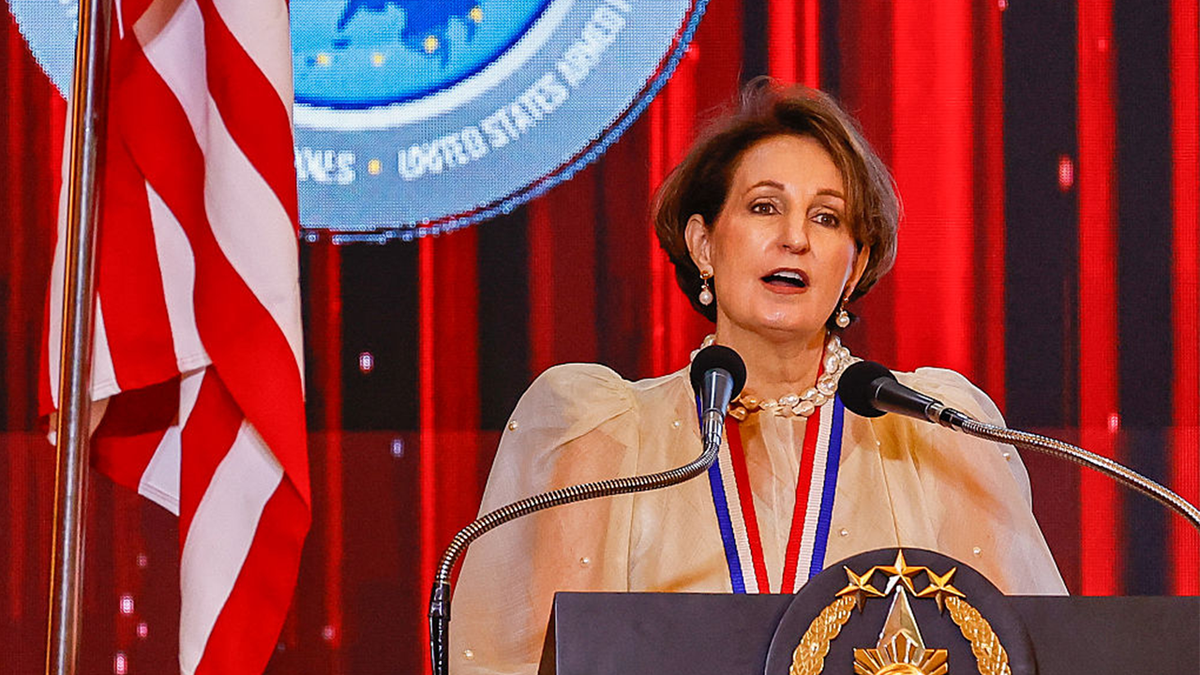
Rodriguez called on his government’s Department of Foreign Affairs (DFA) to summon U.S. Ambassador to the Philippines MaryKay Carlson to demand answers over the advisory. (Getty Images)
CLICK HERE TO GET THE FOX NEWS APP
Rodriguez argued that the warning places the country in a bad light for the international community.
«It discourages not only Americans but other foreign tourists as well from visiting the Philippines. It will surely hurt our tourism sector,» he said. «It is likewise particularly biased against our beloved island, Mindanao.»
INTERNACIONAL
Lina Meruane: “Siempre quise ser vieja, cumplir años es ganarle tiempo a la muerte”

A medida que ese té que se trajo desde la habitación vaya bajando, Lina Meruane -la escritora chilena Lina Meruane- va a decir unas cuantas cosas. Va a decir que grandes escritores como Mario Vargas Llosa o Julio Cortázar creaban “figuras femeninas que eran un cartón y eran un cliché”. Va a decir que no cree que lo que está escribiendo “no tenga una capacidad de convocatoria ni que sea un lenguaje de un barroquismo incomprensible”. Que el entretenimiento, la novelas del verano, la aburre. Va a decir que quizás la literatura “no es el fenómeno que fue porque competimos con otros fenómenos que son muy populares”, pero que antes leían los muy letrados. Sí, va a decir que quería ser vieja porque pensaba que no iba a llegar. Y que ahora que es vieja -lo dice ella, tiene 55 años- ve que “no es verdad que una se vuelva más lista”. Aunque la experiencia ayuda, eso sí.
A Lina Meruane -autora de libros como Sangre en el ojo, Sistema nervioso, Zona ciega, Plan equis, Fruta podrida– sus alumnos de la Universidad de Nueva York a veces le reclaman que no haga un “trigger warning”, es decir que no les advierta, antes de darles a leer una novela por ejemplo, que habrá pasajes difíciles, duros, fuertes. Que no les ponga algodones para la lectura.
Ahora, Meruane está en Buenos Aires participando del festival literario Filba, donde hizo una lectura, dio una charla, dio un taller. Pero ahora está sentada, con el té, en el bar del hotel. Entra el sol por las ventanas.
-En tus libros, como en los de autoras como la Premio Nobel Han Hang, o Gabriela Cabezón Cámara, aparece un lenguaje, digamos, no natural. No es como hablamos todos los días. ¿Por qué? ¿Cómo es esa búsqueda?
-Es que yo pienso que la literatura es una construcción de lenguaje. Siempre parto por las palabras. Entonces, lo que más me gusta es jugar con las palabras, cosa que uno no hace en su habla cotidiana, porque uno no se va a poner barroca para la conversación, no va a recurrir a arcaísmos, no va a trabajar la rima en la conversación.
-¿Cómo es eso de partir de las palabras? ¿No de una idea que encuentra sus palabras?
-Te doy un ejemplo. En Sangre en el ojo, que tal vez sea mi novela más conocida, en el momento en que la protagonista llega a encontrarse con la madre, yo pienso: “¿Cómo describo a esta madre? ¿Cómo la saco del cliché?”. Entonces pienso: “Esta madre es como una medusa”. Me meto al diccionario a mirar “medusa” y de repente aparece una cantidad de palabras increíbles que son las palabras que tienen que ver con pulpo, tentáculo, tinta… Y entonces yo construí el personaje a partir de, de esas palabras. Eso me permitió imaginar que la madre mete su mano por entre las fibras de la tela del brazo y la aprieta y medio le estrangula el brazo a la protagonista. Todo eso va saliendo ahí a partir de las palabras. Creo que por eso se nos reconoce como literatura, por una búsqueda que se diferencia de un habla más televisiva o un habla más de las series.

)
-¿Cómo aparece eso?
-A veces en un personaje hay una crisis con el lenguaje que tiene que ver con la crisis en su vida. Entonces, claro, va a llegar el editor a decirme: “Oye, ¿estás segura de esto? Porque esto no tiene mucho sentido». Y es eso, justo. no tiene mucho sentido, porque el lenguaje no siempre es racional. También el lenguaje tiene un nivel de sinsentido.
–Y cuando leés, ¿qué te pasa con ese tipo de cosas?
– Yo soy muy lectora de autores de lenguaje. Y me pasa, por ejemplo, con ese género de la novela entretenida del verano, el best seller, que a mí me aburre, que me aburre muchísimo porque no me pasa nada a nivel de lenguaje. Todo lo que cuenta esa novela yo ya lo sé, lo entiendo. A mí ese género del entretenimiento me parece lo más aburrido.
“Como la chica nerd que siempre he sido, sentía que tenía pocas herramientas para la vida real”
-Me preguntaba por el lugar social de literatura, cómo cambió. Vos sos una escritora importante pero el nivel de masividad de autores como García Márquez, Vargas Llosa… Borges. Más allá de cómo se los leyera, su lugar público era otro. ¿Tendrá que ver con esto que me decís?
–Yo no pienso que lo que yo estoy escribiendo o lo que Nona Fernández está escribiendo o lo que Han Kang escribe o lo que Cabezón Cámara escribe, no tenga una capacidad de convocatoria ni que sea un lenguaje de un barroquismo incomprensible. O sea, no es Lezama Lima. Digamos que no es un lenguaje en el que no se pueda entrar. En efecto, tiene un nivel de dificultad mayor para entrar, pero no es un lenguaje opaco. Y, además, creo que es una literatura que está pensando lo político de otra manera que la generación anterior, pero que sigue pensando lo político. Y hay autores con un arrastre muy fuerte en redes. Ahora, a lo mejor no es el fenómeno que fue porque competimos con otros fenómenos que son muy populares. Y por otro lado: ¿cuánta gente leía en otras épocas? Había un montón de gente que no leía en otras épocas, que no sabía leer o que no comprendía lo que leía o que no tenía acceso a la literatura.
-Y hoy corremos, corremos…
-Estamos muy atravesados por una velocidad que no es la velocidad de la literatura. Porque uno, ¿cuánto se demora en leer un libro? Cinco horas, diez horas, quince horas, depende del largo. Y además, la lectura es un ejercicio de lentitud, no es un ejercicio veloz. Pero justo ahí yo encuentro que está la posibilidad de pensar, la posibilidad de reflexionar, la posibilidad de conmocionarse. Y veo algo más.

-¿Qué?
-Yo daba una clase sobre la literatura de la guerra ydii una novela que a mí me encanta, El gran cuaderno de Agota Kristof. Era un curso sobre la literatura de la guerra, o sea que tampoco íbamos a hablar de flores marchitándose en un jardín. Y entonces vino un estudiante después de la primera clase y me dijo que tenía que haberle advertido al curso que era una novela muy dura. Esto de los trigger warnings, que tienes que avisar a los estudiantes que se pueden saltar determinados capítulos. Que los padres, en las escuelas secundarias y en las primarias deciden qué pueden y qué no pueden leer sus hijos. Y eso tiene a la literatura completamente envuelta en unos pañales, no vaya a ser que un estudiante sienta perturbación, trauma, incomodidad, que el texto esté en contra de sus valores religiosos o de sus valores políticos.
“La lectura es un ejercicio de lentitud”
-Es decir, que se entere de que hay otros que piensan y viven diferente. ¿Qué hiciste?
-Es una novela en la que, en medio de la guerra, una madre deja a dos chicos con la abuela, y los chicos hacen ejercicios de autoeducación para resistir la violencia. Y se vuelven ultraviolentos ellos. Entonces, hacen unas cosas nefastas. Y hay un personaje que entra en relación sexual con los animales. Entonces, viene el chico y me dice: “Profesora, usted no nos avisó que esta novela era tan dura”. Me lo quedé mirando y le dije: “Bueno, te avisé cuando di el título del curso, Literatura de la guerra”. Y, a continuación le dije: “Y tú seguro que ves muchas películas de guerra” Y me dijo: Sí, claro que veo películas de guerra, pero son películas. Yo sé que son películas. Mientras que cuando leo este libro me resulta mucho más gráfico». Eso para mí fue muy impresionante porque pensé -aunque no es idéntico en inglés- en la palabra “gráfico”, como que hay una imagen. ¿Qué más gráfico que una película? Al tener que imaginar esta escena, produjiste la imagen, la tienes que ver. Y entonces se queda contigo, ahora es tuya. Y ese es el nivel de impacto que puede tener la lectura. Y en una generación menos educada en la lectura, todo lo que leen es real. Y los impacta como si fuera real, porque se volvió real al tener que imaginarlo, al hacerlo propio.
-También hay mucha autoficción o mucha literatura del yo, que se lee como real.
-Una de las preocupaciones de los alumnos de Escritura Creativa, que no fue una preocupación para mi generación, es cómo escribir sobre el otro sin que me acusen de haberme apropiado. Entonces, la salida, digamos, fácil es escribir sobre el yo. ¿Qué voy a escribir? Sobre una mujer blanca, de 50 años, escritora…? Es un mundo muy reducido. Yo siempre digo: “No importa qué escribes, importa cómo”. Por ejemplo, una de las grandes críticas sobre los autores que escribieron personajes femeninos en el boom, es un claro ejemplo de eso: eran grandes escritores que contaban unos mundos impresionantes, pero cuyas figuras femeninas eran un cartón en la mayor parte de los casos y eran un cliché.
-¿En quiénes pensás?
-En Vargas Llosa. Incluso en el querido Cortázar, que lo admiro muchísimo, y de repente te encontrabas con que las mujeres… Por ejemplo, en Rayuela, La Maga. Son todos esos chicos que están haciendo mil cosas y la Maga es una mujer que está ahí un poco al servicio de Oliveira. Y que se convierte en una mala madre porque abandona el bebé Rocamadour, que muere, y entonces ella es culpable de ese abandono, mientras todos los chicos están ahí fiesteando y nadie carga con esa culpa. Ahí hay una representación de un personaje que es muy funcional, muy útil, pero también un personaje que tiene muy poca subjetividad y que no tiene la libertad que tienen los personajes masculinos y a la que se le endilgan, digamos, una serie de configuraciones sociales que no la sacan de su lugar y no la complejizan.
“Siempre pensamos en el cuerpo masculino como un cuerpo que agrede”
-¿Cuáles son tus personajes más difíciles?
-Los hombres, por supuesto. Y por eso estoy escribiendo sobre hombres. Estoy escribiendo sobre la guerra. Y pensando ese lugar vulnerable de los cuerpos masculinos. Siempre pensamos en el cuerpo masculino como un cuerpo que agrede, pero ¿qué pasa cuando lo pensamos desde otro lugar? También me he dado cuenta de que hay pocas ancianas en la literatura.
-Brujas, madrastras…
-Me está empezando a importar qué pasa con esa figura. Posiblemente me esté volviendo más sensible puesto que yo también estoy entrando en eso. Bueno, yo ya soy senior, en realidad, tengo 55 años. Y reivindico mucho la palabra “vieja” para mí misma.
-¿Cómo es eso?
-Cuando uno dice “Soy vieja”, todo el mundo dice “No, pero no, no, no”. Y yo digo: “¿Por qué no?» Yo he sido niña, he sido adolescente, adulta… ahora soy vieja. ¿Y qué pasa? No es un insulto, es un momento de la vida de uno. Y yo siempre quise ser vieja porque yo no sabía si iba a llegar a ser vieja.

-¿Por qué?
-Es una historia familiar un poco larga, pero yo pensaba que iba a vivir hasta los 30 años. Estoy llegando al doble de esa edad, para mí cumplir años siempre es una alegría, es como haberle ganado tiempo a la muerte. Entonces, siempre quise ser vieja y quise ser vieja por eso, porque tenía miedo de morirme joven. Y estuve apurando mucho mi vida para hacer dos vidas en una. La velocidad interna que yo llevaba, y que todavía llevo un poco encima, estaba educada en la posibilidad de morir joven, pero también porque, como la chica nerd que siempre he sido, sentía que tenía pocas herramientas para la vida real.
-¿Y eso iba a mejorar con los años?
-Pensaba que cuando fuera vieja ya no iba a tener ese problema, que ya iba a haber aprendido las lecciones de la vida y que iba a poder vivir mejor todas las situaciones.
-¿Y pasó?
-No, no es verdad que una se vuelve más lista porque está más vieja. Pero sí adquiere una experiencia. Y la vida te da muchos golpes, pero son golpes de los que una va aprendiendo. Y entonces ahora siento menos inseguridades y angustias de las que sufrí en los primeros 30 años de mi vida. O sea, este ha sido un tiempo mejor: sé cómo enfrentarme a las crisis y, en fin, he construido una vida.
–
INTERNACIONAL
Trump unveils 20-point plan to secure peace in Gaza, including granting some Hamas members ‘amnesty’
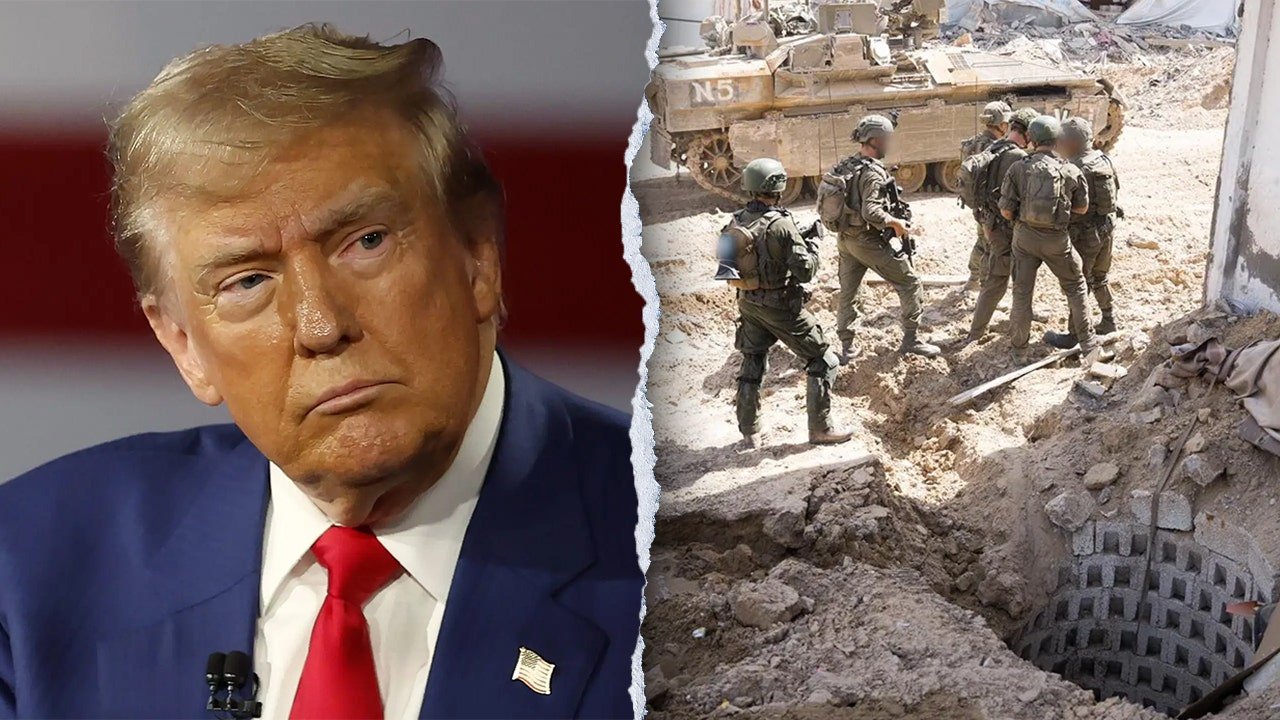
NEWYou can now listen to Fox News articles!
New York, NY – President Donald Trump released his new 20-point plan to end the Gaza war on Monday, when he also welcomed Israeli Prime Minister Benjamin Netanyahu to the White House.
The Trump administration published a 20-point plan on Monday afternoon on how it will end the war in Gaza as the bloodshed continues raging since Oct. 7, 2023. The plan includes granting Hamas terrorists who give up their arms in favor of peace «amnesty,» establishing Gaza as a «deradicalized terror-free zone» and redeveloping the area so that it no longer poses a threat to its neighbors or residents alike.
«If both sides agree to this proposal, the war will immediately end. Israeli forces will withdraw to the agreed-upon line to prepare for a hostage release. During this time, all military operations, including aerial and artillery bombardment, will be suspended, and battle lines will remain frozen until conditions are met for the complete staged withdrawal,» the third point of the document reads.
The plan explained that within 72 hours of Israel accepting the agreement, the country will release remaining hostages in its captivity — whether they are alive or deceased. Upon the release of the remaining hostages, Israel will then release «250 life sentence prisoners plus 1700 Gazans who were detained after October 7th 2023,» according to the fifth point of the plan.
FRANCE SAYS UN RECOGNITION OF PALESTINIAN STATE IS A BLOW TO HAMAS NOT A GIFT
Israeli soldiers watch the northern Gaza Strip from southern Israel July 30, 2025. (Ohad Zwigenberg/AP photo)
The plan adds that Hamas terrorists who are peaceful and give up their weapons will be granted «amnesty.»
«Once all hostages are returned, Hamas members who commit to peaceful co-existence and to decommission their weapons will be given amnesty. Members of Hamas who wish to leave Gaza will be provided safe passage to receiving countries,» the sixth point of the plan read.
Hamas has not yet accepted the agreement, with Trump threatening the terrorist group to accept the plan or likely face further bloodshed.
«Israel would have my full backing to finish the job of destroying the threat of Hamas,» Trump said on Monday during a press conference, warning Hamas to accept the deal. «But I hope that we’re going to have a deal for peace. And, if Hamas rejects the deal, which is always possible — they’re the only one left. Everyone else has accepted it. But, I have a feeling that we’re going to have a positive answer. But if not, as you know, maybe you’d have our full backing to do what you would have to do.»
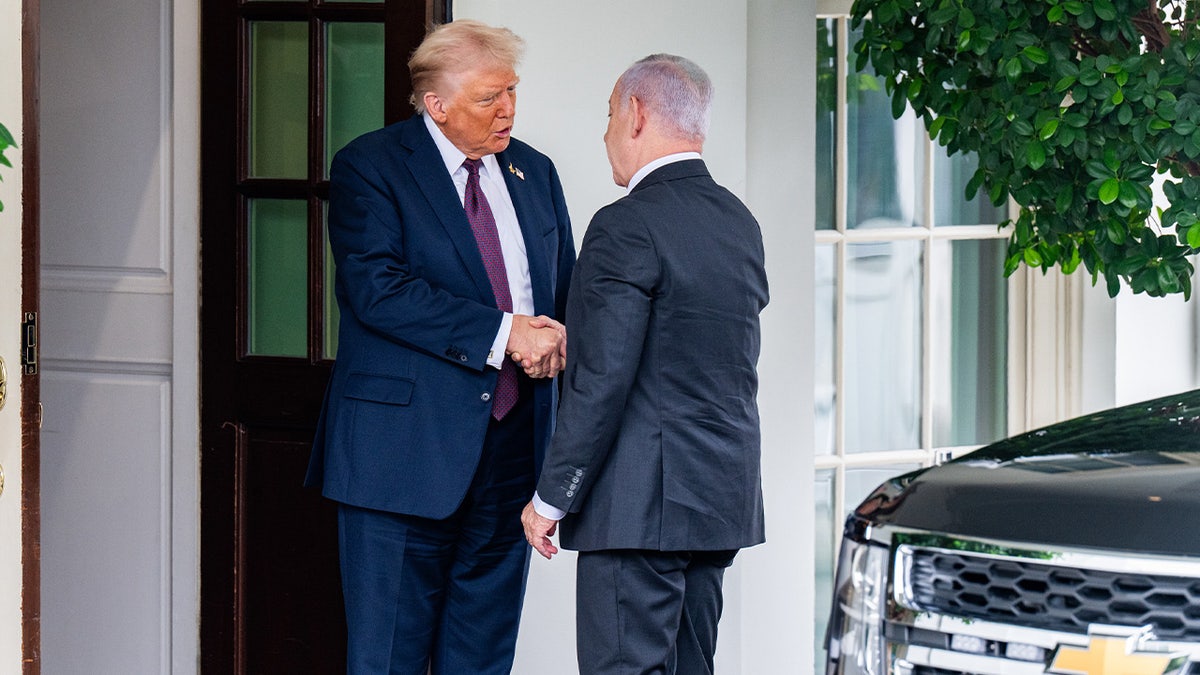
President Trump greets Israeli Prime Minister Netanyahu outside the White House on Sept. 29, as the pair works to achieve peace in Gaza. (Annabelle Gordon/Bloomberg via Getty Images)
Netanyahu added during a joint press conference with Trump on Monday that Israel will «will finish the job by itself» if Hamas does not agree to the plan and continues tthreatening the region.
«If Hamas rejects your plan, Mr. President, or if they supposedly accept it, and then … basically do everything to counter it, then Israel will finish the job by itself. This can be done the easy way, or it can be done the hard way, but it will be done. We prefer the easy way, but it has to be done. All these goals must be achieved because we didn’t fight this horrible fight sacrifice the finest of our young men to have Hamas stay in Gaza and threaten us again and again and again with these horrific massacre,» he said.
A 21-point peace plan circulated at the United Nations earlier this month, as Israel launched long-range strikes deep inside Yemen, hitting targets more than 2,000 kilometers from home and underscoring how volatile the Middle East remains even as diplomacy played out in New York.
Trump unveiled the 21-point initiative to end the Gaza war during meetings with Arab leaders on the sidelines of the United Nations General Assembly earlier in September.
A White House official, speaking on background, previously told Fox News Digital, «The President underscored his desire to bring fighting in Gaza to an expeditious close. Special Envoy Witkoff summarized the U.S. plan for Gaza, including the return of all hostages living and deceased, no further attacks on Qatar, a new dialogue between Israel and Palestinians for peaceful coexistence and more.
«Foreign partners expressed broad agreement that President Trump was the only one who could end the fighting in Gaza and expressed the hope that they could work together with Special Envoy Witkoff to consider the President’s plan as Americans continue to engage with Israeli officials,» the White House official added.
Arab officials told Fox News Digital that, during the meeting, leaders pressed Trump to confirm he would block Israeli annexation of the West Bank, describing the discussion as «productive.»
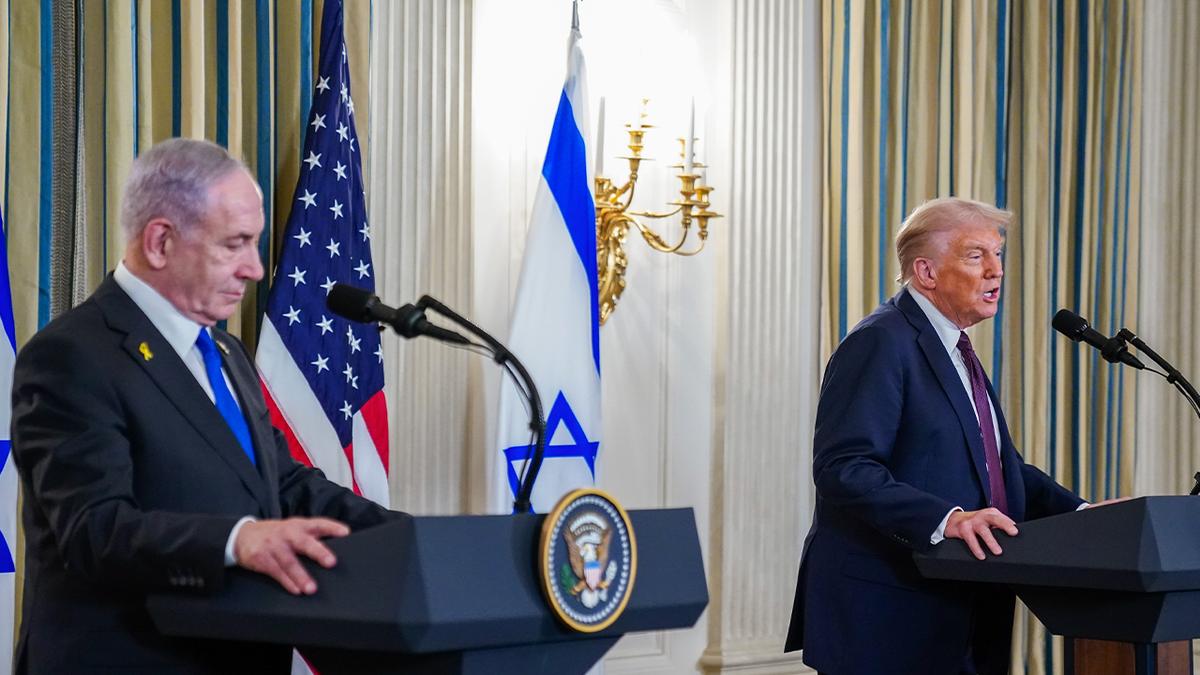
President Trump hosted Israeli Prime Minister Netanyahu at the White House as the pair looks to reach a peace deal in the Gaza war. ( Win McNamee/Getty Images)
Speaking at the Concordia Annual Summit in New York, Witkoff also described a «very productive» meeting Tuesday between Trump and officials from Saudi Arabia, the United Arab Emirates, Qatar, Egypt, Jordan, Turkey, Indonesia and Pakistan.
«We presented what we call the Trump 21-point plan for peace in the Middle East,» Witkoff said. «I think it addresses Israeli concerns as well as concerns of neighbors in the region.»
ABBAS TO ADDRESS UN AFTER VISA CLASH WITH US AS QUESTIONS SWIRL OVER HAMAS
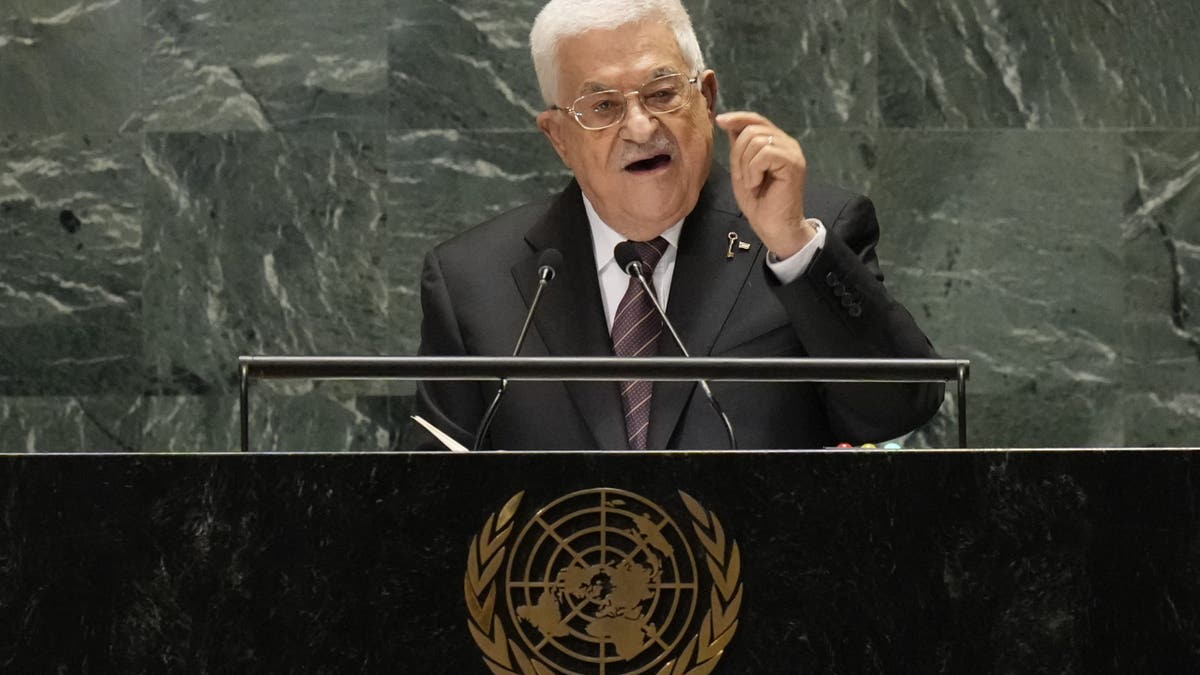
Palestinian Authority President Mahmoud Abbas addresses the 79th session of the United Nations General Assembly Sept. 26, 2024, at U.N. headquarters. (AP Photo/Frank Franklin II)
Palestinian Authority President Mahmoud Abbas, speaking in a recorded UNGA address after being barred from entry to the U.S., also signaled support.
«We declare that we are ready to work with U.S. President Donald Trump and with the Kingdom of Saudi Arabia and France, the United Nations and all partners to implement the peace plan that was approved in the conference that was held on the 22nd of September, in a way that would lead towards a just peace and regional cooperation,» Abbas said.
Abbas added that the PA is prepared to take over security and governance in Gaza, while Hamas must disarm.
«The dawn of freedom will emerge, and the flag of Palestine will fly high in our skies as a symbol of dignity, steadfastness and being free from the yoke of occupation,» he said. «Palestine is ours. Jerusalem is the jewel of our hearts and our eternal capital. We will not leave our homeland. We will not leave our lands.»
Netanyahu, before departing for New York, where he was scheduled to address the UNGA Friday, said without directly commenting on the 21-point proposal, «In Washington, I will meet for the fourth time with President Trump, and I will discuss with him the great opportunities our victories have brought, as well as our need to complete the war’s objectives: to return all of our hostages, to defeat Hamas and to expand the circle of peace that has come our way following the historic victory.»
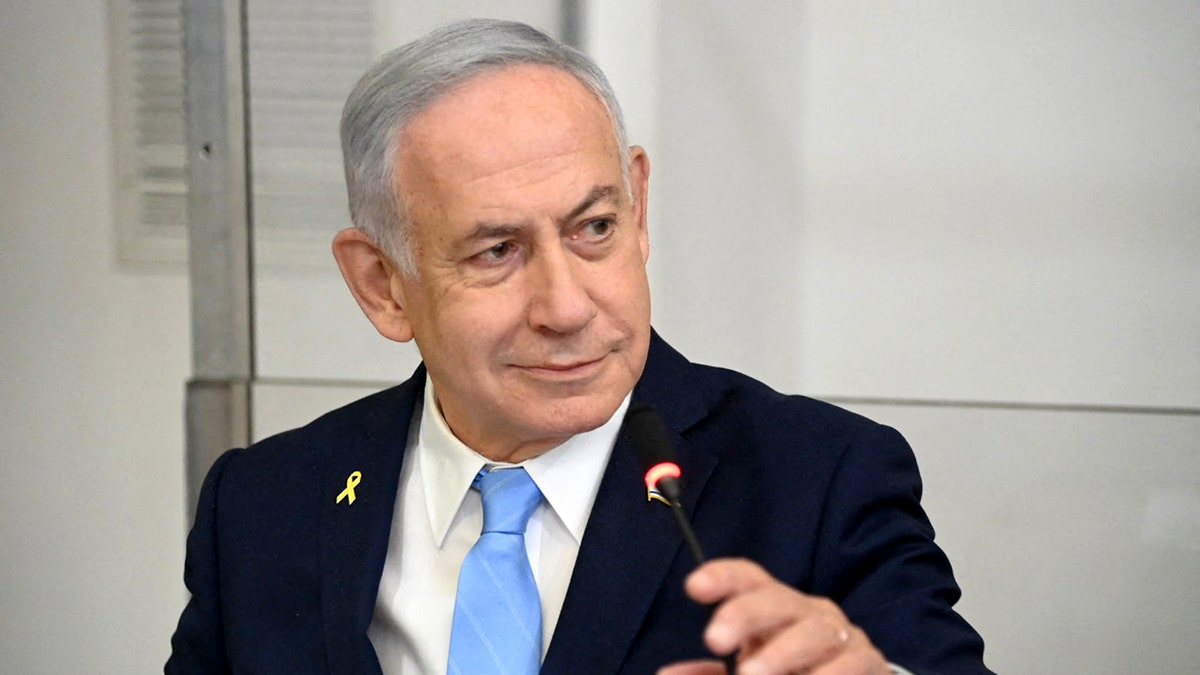
Israeli Prime Minister Benjamin Netanyahu attends his corruption trial at the district court in Tel Aviv March 12, 2025. (Yair Sagi/Pool/AFP via Getty Images)
Even as Trump pushed diplomacy in New York, Israel expanded its campaign against Iran-backed militias. The IDF confirmed Thursday it carried out a wide wave of airstrikes against Houthi targets in Sana’a, Yemen, less than 24 hours after a Houthi drone slammed into a hotel in Eilat, wounding 24 people, two of them seriously.
Saudi and Israeli media reported more than 10 strikes during the Houthis’ weekly address, targeting command centers, intelligence headquarters and military compounds. Israeli officials estimate over 50 militants were killed. The IDF said the operation involved dozens of aircraft and long-range refueling, marking Israel’s 15th strike in Yemen since the war began.
CLICK HERE TO GET THE FOX NEWS APP
Defense Minister Israel Katz said the raids, carried out under the code name Package Delivered, dealt a heavy blow.
«We struck numerous terror targets of the Houthi regime in Sana’a, eliminating dozens of operatives and destroying stockpiles of drones and weapons,» Katz declared. «As I promised yesterday — those who harm us will be harmed sevenfold.»
middle east,donald trump,israel,politics,world politics
INTERNACIONAL
Portland set to see Trump crime crackdown reckoning after 2020’s humiliating violence spree
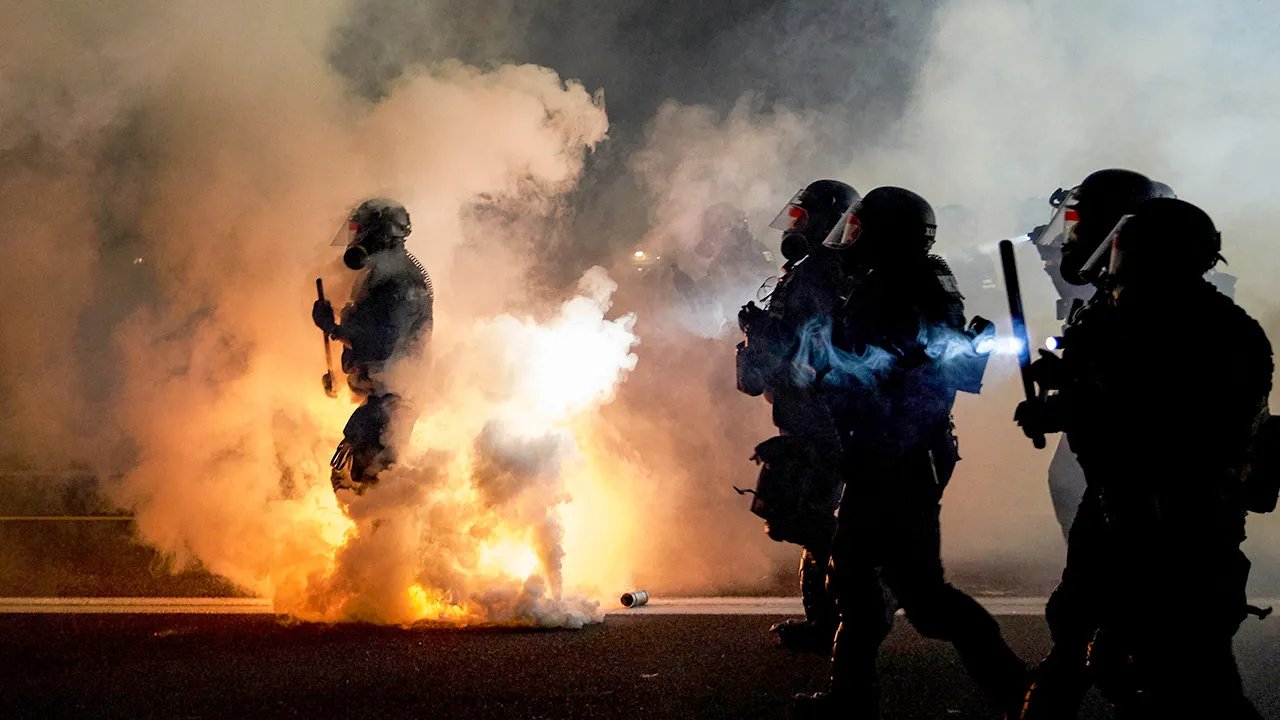
Anti-ICE protesters clash with federal agents in Portland
Fox News’ Jonathan Hunt reports the latest on anti-ICE riots in Portland. ‘Outnumbered’ co-host Kayleigh McEnany also joined ‘America’s Newsroom’ to discuss Oregon’s lawsuit against the Trump admin and an ex-ESPN host calling for civil discourse.
NEWYou can now listen to Fox News articles!
Portland, Oregon, is on track to face a Trump crime crackdown reckoning that’s more than five years in the making.
Portland was ravaged by violence in 2020 as liberal protesters, Black Lives Matter activists, Antifa anarchists and others converged on the deep blue stronghold following the death of George Floyd during an interaction with Minneapolis police on Memorial Day of that year.
The Trump administration deployed federal law enforcement to help quell the violence near federal property, but did not roll out crime crackdown initiatives on par with what the president is currently unveiling in cities such as Washington, D.C., this year.
Now, President Donald Trump has set his sights on the left-wing city to remove illegal immigrants and crack down on crime trends — five years after the city saw millions of dollars in damages and witnessed consecutive nights of rioting that began on Memorial Day and continued into September 2020.
TRUMP VOWS ‘FULL FORCE’ AS HE PLANS TO SEND TROOPS TO PORTLAND AMID ANTI-ICE PROTESTS
Police deploy tear gas and munitions to disperse protesters during a demonstration in Portland, Ore., Sept. 5, 2020. (AP)
«At the request of Secretary of Homeland Security, Kristi Noem, I am directing Secretary of War, Pete Hegseth, to provide all necessary Troops to protect War ravaged Portland, and any of our ICE Facilities under siege from attack by Antifa, and other domestic terrorists,» Trump posted to Truth Social on Saturday morning.
«I am also authorizing Full Force, if necessary. Thank you for your attention to this matter!» he added.
George Floyd’s death on Memorial Day in 2020 sparked nationwide protests and riots, but in Portland, unrest raged for more than 100 consecutive nights, with the city recording a staggering 144% increase in homicides between 2019 and 2021, and millions of dollars in damages to businesses and government buildings.
Trump was in office during the riots and protests of 2020, as his administration juggled the coronavirus pandemic — including state lockdowns and vaccine requirements for some workers — while Trump faced Joe Biden and the Democratic Party at the ballot box.
Trump railed against the violence that played out in The City of Roses, while the Department of Homeland Security launched the Protecting American Communities Task Force to protect federal monuments, memorials, and other buildings from violence and vandalism in the city and other crime-rattled cities like it.
OREGON SUES OVER TRUMP ADMIN’S ‘WAR-RAVAGED PORTLAND’ NATIONAL GUARD TROOP DEPLOYMENT
The task force was formed after rioters broke into the Multnomah County Justice Center at the end of May, igniting a fire inside and spray-painting the building. The justice center houses Portland police headquarters and a county jail, and sits next to the Mark O. Hatfield U.S. Courthouse.
The federal courthouse faced repeated vandalism, including rioters launching fireworks at the building, graffiting the exterior with anti-police slogans, and breaking its windows. The task force worked to protect the Hatfield building, as well as a handful of other federal buildings, from attacks, Fox News Digital previously reported.
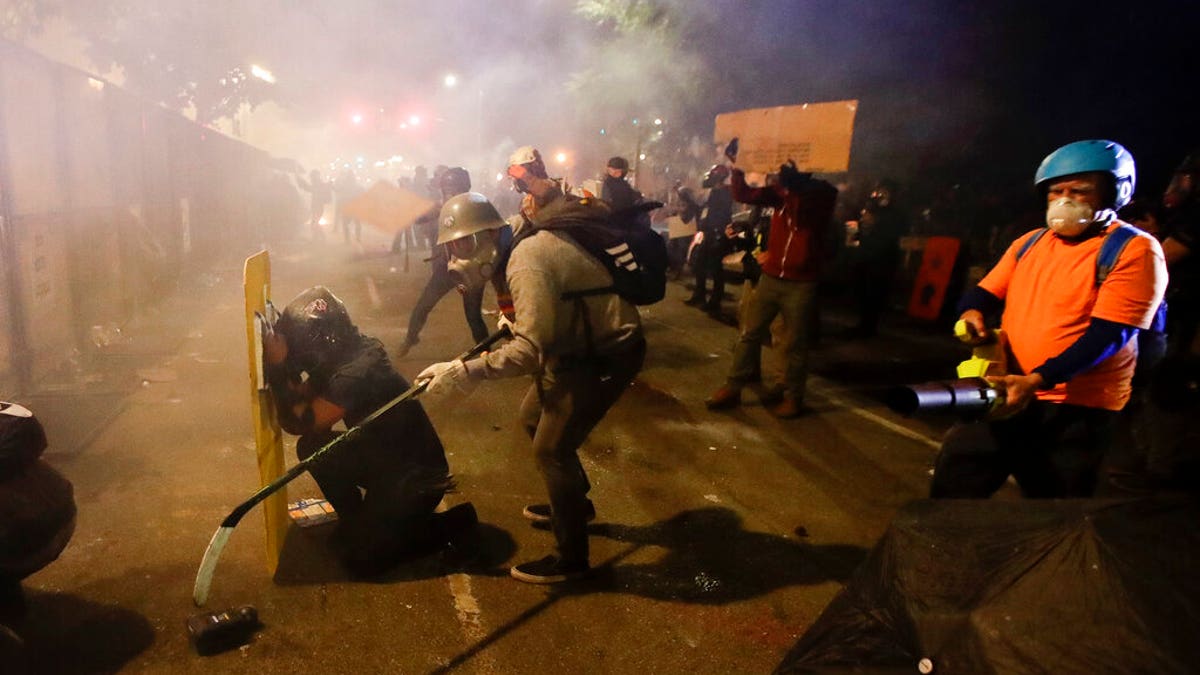
Demonstrators shield from tear gas fired by federal officers during a protest at the Mark O. Hatfield U.S. Courthouse in Portland, Ore., July 24, 2020. (Marcio Jose Sanchez/AP Photo)
«These are anarchists. These are not protesters. People say protesters. These people are anarchists. These are people that hate our country. And we’re not going to let it go forward,» Trump said in July 2020, while claiming that violence-plagued cities needed «more federal law enforcement» and celebrating that the law enforcement deployed to Portland had «done a fantastic job.»
Trump railed against local Democratic leaders at the time for failing to end the violence when it first began, including slamming then-Mayor Ted Wheeler as «incompetent» and a «fool,» as well as messages against then-Gov. Kate Brown, while underscoring that federal law enforcement would clean the city up.
OREGON COUNTY LOST $1 BILLION IN 2020 AS RESIDENTS FLED CRIME, HOMELESSNESS: ‘IT’S LIKE PORTLAND DIED’
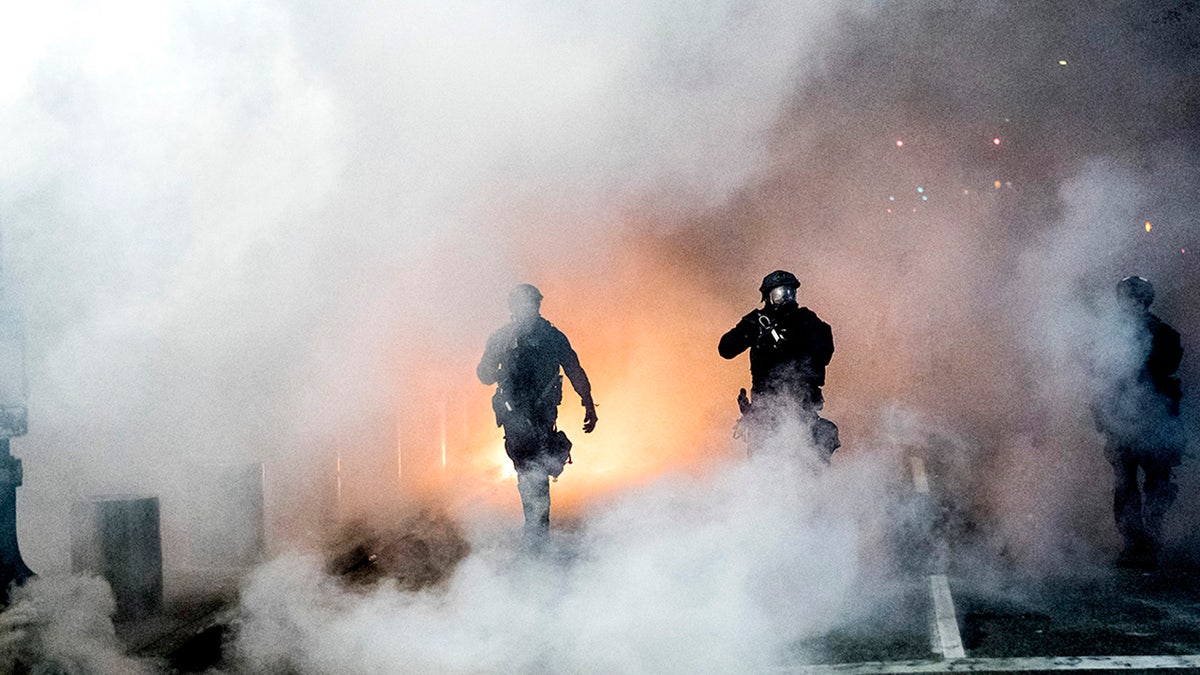
Federal officers fire crowd control munitions at protesters outside the Mark O. Hatfield U.S. Courthouse in Portland, Ore., July 21, 2020. (AP Photo/Noah Berger)
Federal law enforcement officials on the task force, however, were phased out of the city that summer, with local police replacing federal officers who worked to protect federal buildings beginning at the end of July.
Critics accused Trump of abusing power by deploying federal authorities to Portland. A coalition of Democratic mayors — including leaders from Washington, D.C., Portland and Chicago — urged Congress to block further deployments, arguing it threatened the First Amendment.
PORTLAND RIOTS CAUSED AT LEAST $2.3M IN DAMAGE TO FEDERAL BUILDINGS IN CITY, STATE’S US ATTORNEY SAYS
Protests and riots continued in the city in the fall months of 2020 — when the final leg of the federal election dominated headlines – and after federal officials left the city. Federal law enforcement officials had been phased out of the city by Aug. 31, according to a DHS Inspector General report published in 2021.
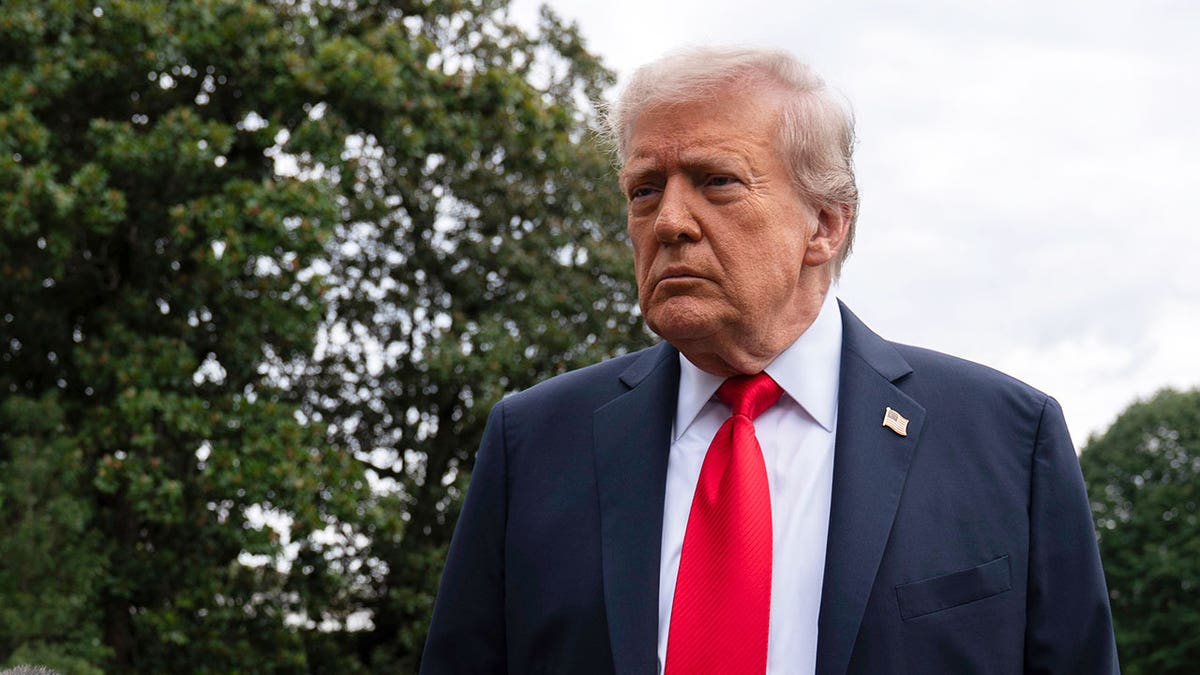
President Donald Trump speaks to reporters before departing the White House, Sept. 7, 2025. (AP Photo/Jose Luis Magana)
All told, the riots caused an estimated $2.3 million in damages to federal buildings in Portland alone, Fox News Digital previously reported, while Portland police reported spending at least $6.2 million to cover overtime and personnel costs for just roughly one month of the riots, and businesses in the downtown area lost tens of millions of dollars in revenue and damages due to the protests and riots, the police chief said at the time.
In the fallout, the police department’s staffing woes worsened as the city defunded its force and morale cratered; homicides hit an all-time high in November 2022 – recording 101 homicides that year – and shootings increased across the city, with Portland recording more than 1,000 shootings across the first 10 months of 2021.
AT LEAST 16 CITIES SEE RECORD HOMICIDES IN 2021
Trump has been on a crime crackdown blitz since his second inauguration, as agencies such as the Department of Homeland Security launched massive deportation efforts to remove the millions of illegal immigrants who flooded the nation under the Biden era, and Trump turned his attention to individual cities he believes are in need of assistance on law and order.
Trump federalized the Washington, D.C., police department on Aug. 11 and deployed the National Guard to patrol the city. Trump has celebrated the federalization of Washington, D.C.’s police force as a success, including notching zero homicides across a 13-day period in August, and arresting more than 2,000 suspects for crime stretching from illegal firearms charges to immigration arrests. He has also lauded Democratic D.C. Mayor Muriel Bowser for her assistance with the effort.
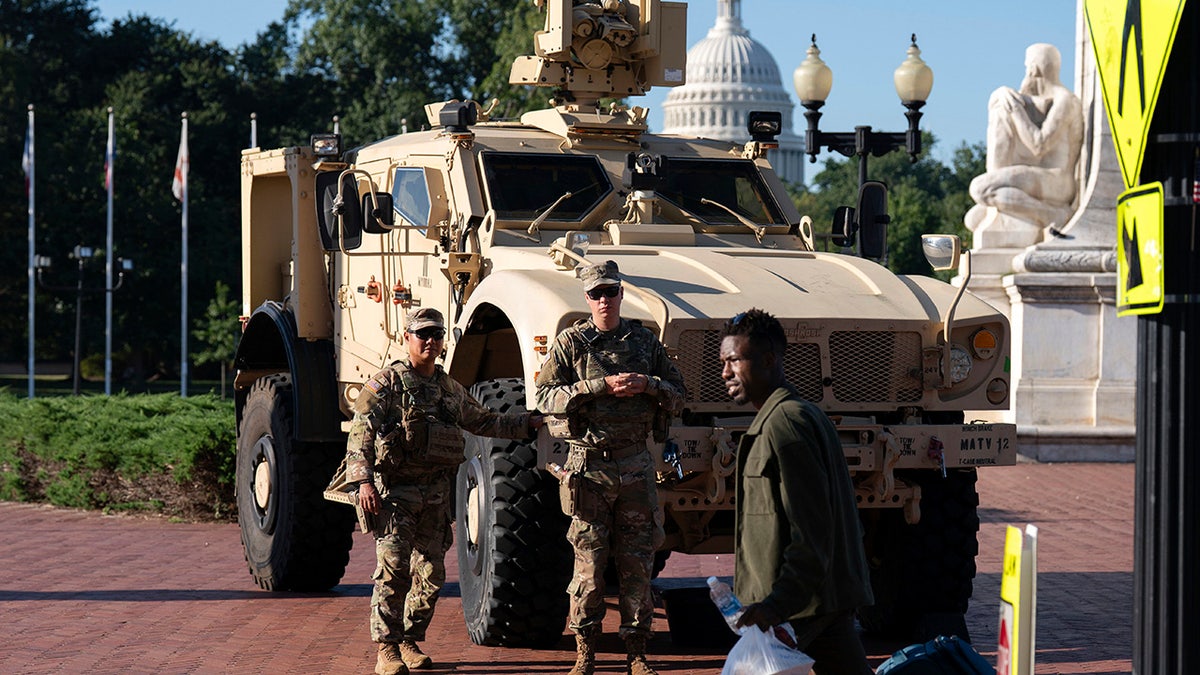
National Guard troops patrol Washington, D.C., after Trump ordered their deployment in August 2025. (AP Photo/Jose Luis Magana)
«We don’t have a crime problem in Washington anymore,» Trump told reporters earlier in September of the crackdown. «And the mayor has been very helpful.»
Two hundred National Guard members are expected to converge on Portland in the coming days. The campaign follows Chicago’s ongoing «Midway Blitz» crime crackdown to weed out illegal immigrants in the Windy City, and as Memphis, Tennessee, prepares to receive its own teams of federal law enforcement and National Guard members later this week to combat crime in the southern city.
Portland has seen ongoing issues with crime, including rampant drug use and homelessness, and has seen flaring protests over the summer — most notable near a Portland ICE facility — as the Trump administration carried out various immigration crackdowns across the country.
Anti-ICE graffiti was scrawled on the outside of the Portland ICE facility, while the demonstrations have become violent at times between protesters and federal agents, prompting authorities to use rubber bullets, tear gas and flash bangs to break up the crowds, Fox Digital reported earlier this month.
In August, protesters displayed a guillotine and fought with police before officers fired munitions to disperse the crowd.
CLICK HERE TO GET THE FOX NEWS APP
Oregon sued the Trump administration on Sunday in an attempt to prevent the deployment of 200 National Guard members to Portland. The National Guard members began arriving to the city over the weekend, Fox Digital previously reported.
Local leaders have slammed Trump’s order as «unlawful,» while arguing the city poses no threat to national security.
«Our city is a far cry from the war-ravaged community he has posted on social media,» Democratic Gov. Tina Kotek told reporters at a news conference on Sunday. Kotek added that she spoke directly with Trump.
«There is no insurrection, there is no threat to national security and there is no need for military troops in our major city,» she added.
Fox News Digital’s Cameron Arcand, Michael Dorgan and Michael Ruiz contributed to this report.
portland,antifa,crime,donald trump,politics,oregon

 CHIMENTOS3 días ago
CHIMENTOS3 días agoMario Massaccesi confesó toda la verdad detrás de su fuerte pelea con Paula Bernini

 CHIMENTOS3 días ago
CHIMENTOS3 días agoFlor Jazmín Peña reveló la profunda crisis que tuvo por culpa de Nico Occhiato

 CHIMENTOS3 días ago
CHIMENTOS3 días agoMirtha Legrand bloqueó a una famosa periodista en WhatsApp y ella está desesperada para que le vuelva a hablar













